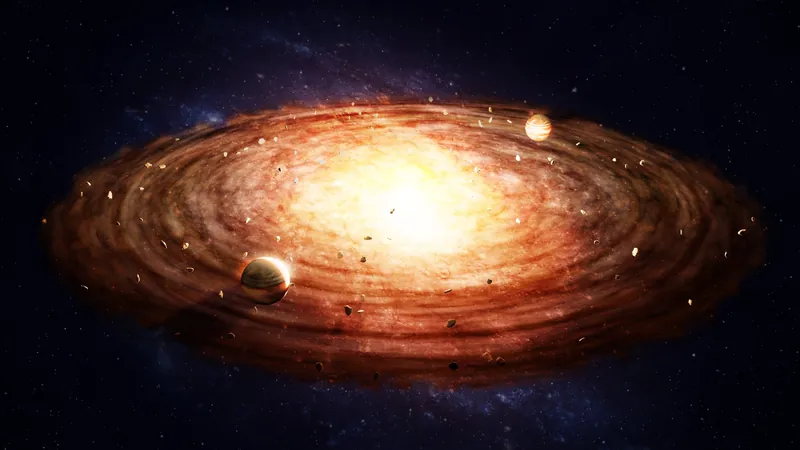
Cosmic Twists: The Hidden Key to How Planets Are Born!
2025-09-15
Author: William
Revolutionizing Our Understanding of Planet Formation
For decades, scientists envisioned planets forming in flat, calm discs of dust and gas. But groundbreaking research is shaking up this old perspective! Instead of serene, pancake-like structures, astronomers have unveiled a more chaotic reality: subtle but widespread warps in the discs where planets originate.
The Unexpected Discovery by exoALMA
This revelation comes from a global team using the Atacama Large Millimetre/submillimetre Array (ALMA) as part of the ambitious exoALMA project. Their findings, recently published in The Astrophysical Journal Letters, suggest that many of these discs are not flat at all. Instead, they can be bent or twisted by half a degree or even up to two degrees, creating significant repercussions for the planets that form within.
How Warped Discs Shape Planetary Systems
Dr. Andrew Winter from Queen Mary University of London explains that these small misalignments may play a role in the varying orbital inclinations seen among planets in our own Solar System. While Earth's orbit is nearly flat, neighboring planets exhibit slight tilts, hinting that such warps might have influenced our cosmic backyard billions of years ago.
Cutting-Edge Science: Mapping Cosmic Motion
Detecting these warps isn’t as straightforward as using a telescope. Instead, the researchers relied on Doppler shifts—tiny changes in the radio waves emitted by carbon monoxide molecules in the gas. These shifts act like a cosmic speedometer, revealing the direction and speed of gas flow with unmatched precision. It turns out that even small warps can account for large-scale features in disc motion and light.
Connecting the Dots: How Warps Affect Star Growth
One of the most intriguing revelations from the exoALMA study is the connection between disc warps and how much material a star accretes. This could mean that the inner and outer regions of discs are more intertwined than previously thought, challenging the traditional view that they act independently.
What Causes These Cosmic Warps?
The origins of these intriguing warps remain mysterious. They might be caused by the gravitational pull of an unseen companion star or chaotic gas flows within the star-forming region. Regardless of their source, these twists complicate how gas moves and ultimately influence the building blocks of young planets.
A Paradigm Shift in Planetary Formation
If warps are indeed common, they may redefine our understanding of planet formation entirely. Instead of orderly, predictable processes, the universe may favor more chaotic, dynamic beginnings. Dr. Winter notes that this shift in perception has profound implications for how we comprehend the evolution of planetary systems.
Looking Ahead: What’s Next for Cosmic Research?
With the exoALMA program paving the way, researchers are set to delve deeper into the intricacies of cosmic disc formation. As telescope technology advances, we can expect to uncover even more warped discs and the mysteries behind their creation.
The Complexity of Cosmic Ballets
This fascinating discovery reveals that the birth of planets is far more complex than we initially thought. The universe is rarely straightforward; even the formation of planets involves a dynamic dance of warps and spirals, reminding us that beneath the calm surface often lies a world of intricate motion.









 Brasil (PT)
Brasil (PT)
 Canada (EN)
Canada (EN)
 Chile (ES)
Chile (ES)
 Česko (CS)
Česko (CS)
 대한민국 (KO)
대한민국 (KO)
 España (ES)
España (ES)
 France (FR)
France (FR)
 Hong Kong (EN)
Hong Kong (EN)
 Italia (IT)
Italia (IT)
 日本 (JA)
日本 (JA)
 Magyarország (HU)
Magyarország (HU)
 Norge (NO)
Norge (NO)
 Polska (PL)
Polska (PL)
 Schweiz (DE)
Schweiz (DE)
 Singapore (EN)
Singapore (EN)
 Sverige (SV)
Sverige (SV)
 Suomi (FI)
Suomi (FI)
 Türkiye (TR)
Türkiye (TR)
 الإمارات العربية المتحدة (AR)
الإمارات العربية المتحدة (AR)